PROTECT YOUR DNA WITH QUANTUM TECHNOLOGY
Orgo-Life the new way to the future Advertising by AdpathwayComposting is for everyone, even in small spaces! It’s a natural process that converts garden and kitchen scraps into a nutrient-rich soil amendment. Vermicomposting, hot composting, and countertop composters allow anyone to harness the power of compost’s waste-recycling microbes.
Composting is as simple as one, two, three:
- Collect nitrogen-rich green waste and carbon-rich brown waste.
- Find a composting system that works for you.
- Compost!
In this article, we explore a variety of methods that work for small yards, kitchen counters, and HOA restrictions. No matter your small space composting challenge, there’s sure to be a solution that’ll work for you and your garden.

Urban Worm Company Worm Castings
Worm Success Bundle
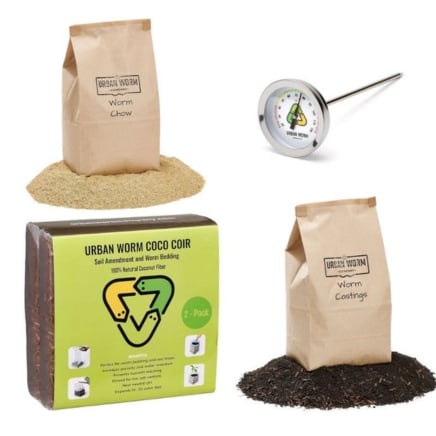
Urban Worm Chow
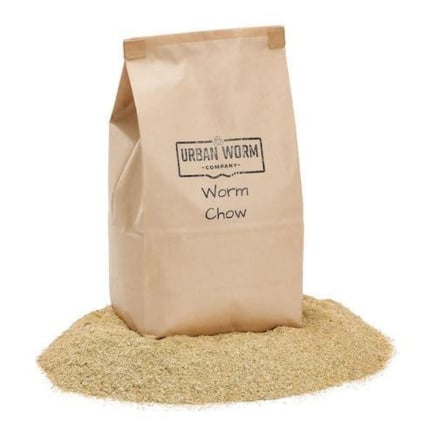
Use a Tumbler
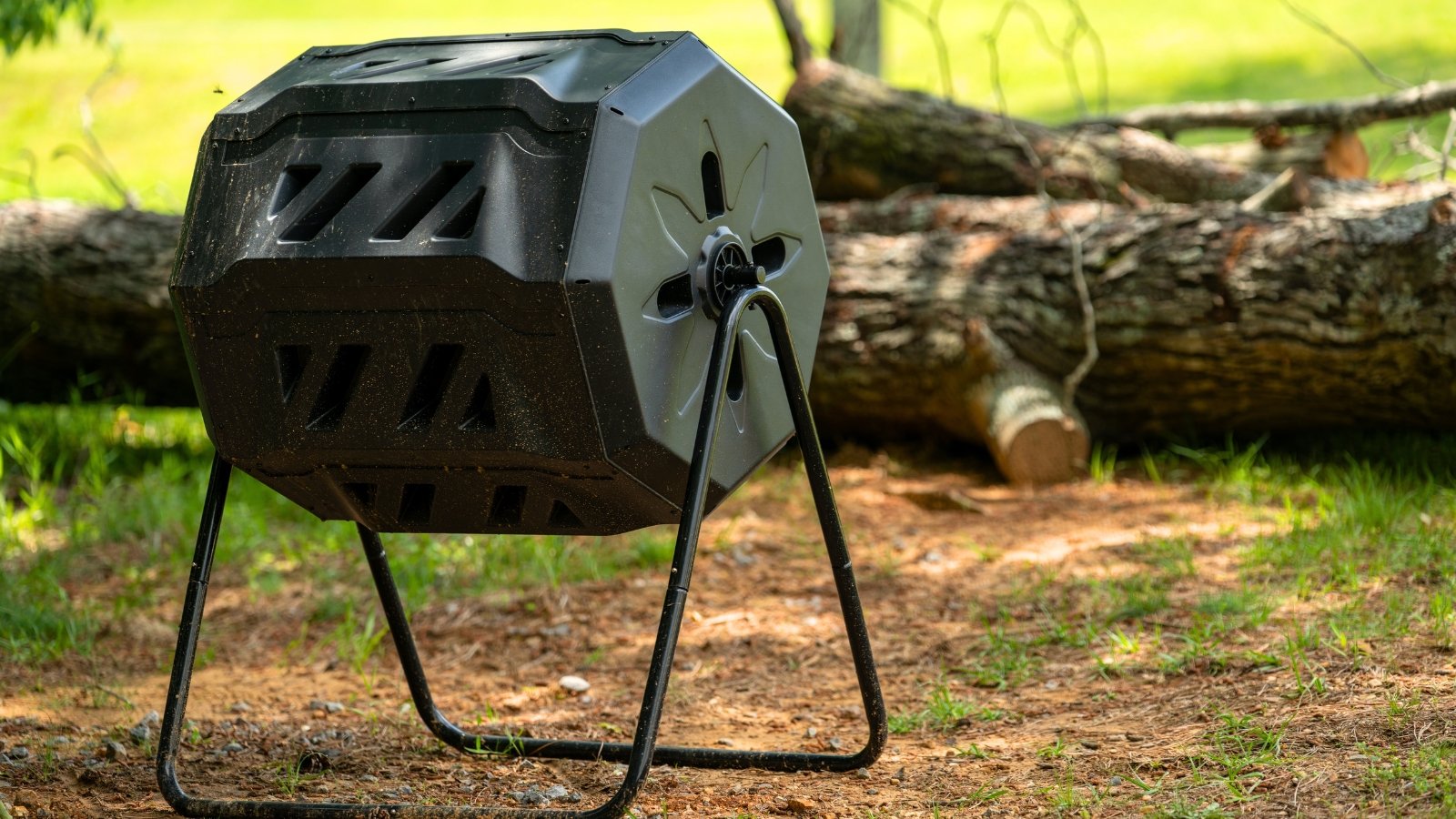 Toss, turn, and let the tumbler do its thing.
Toss, turn, and let the tumbler do its thing.Instead of making a pile that takes up much of your small space, you can use a tumbler to contain your compost. Tumblers are closed vessels commonly available at nurseries, garden centers, and online retailers. Because they sit above the ground and are enclosed, they’re safe from burrowing pests and rodents like moles, voles, and rats.
There’s a wide variety of tumbler options to choose from. Some have a rotating feature, allowing you to easily turn their contents without having to open them up. Others have handles that allow for easy turning.
Though tumblers look different than piles, they require the same care and attention to work properly. They need to stay moist, about 50% moist, and aerated. They need a balanced amount of waste—for every shovelful of nitrogen-rich waste you add, blend two to three shovelfuls of carbon-rich debris.
Use this chart to help you determine whether the organic matter is a nitrogen-rich green or a carbon-rich brown:
| Browns | Greens |
| Straw | Kitchen scraps |
| Fallen, or dry leaves | Grass clippings |
| Twigs and branches | Green plant debris |
| Chemical-free paper | Manure |
Practice Bokashi Composting
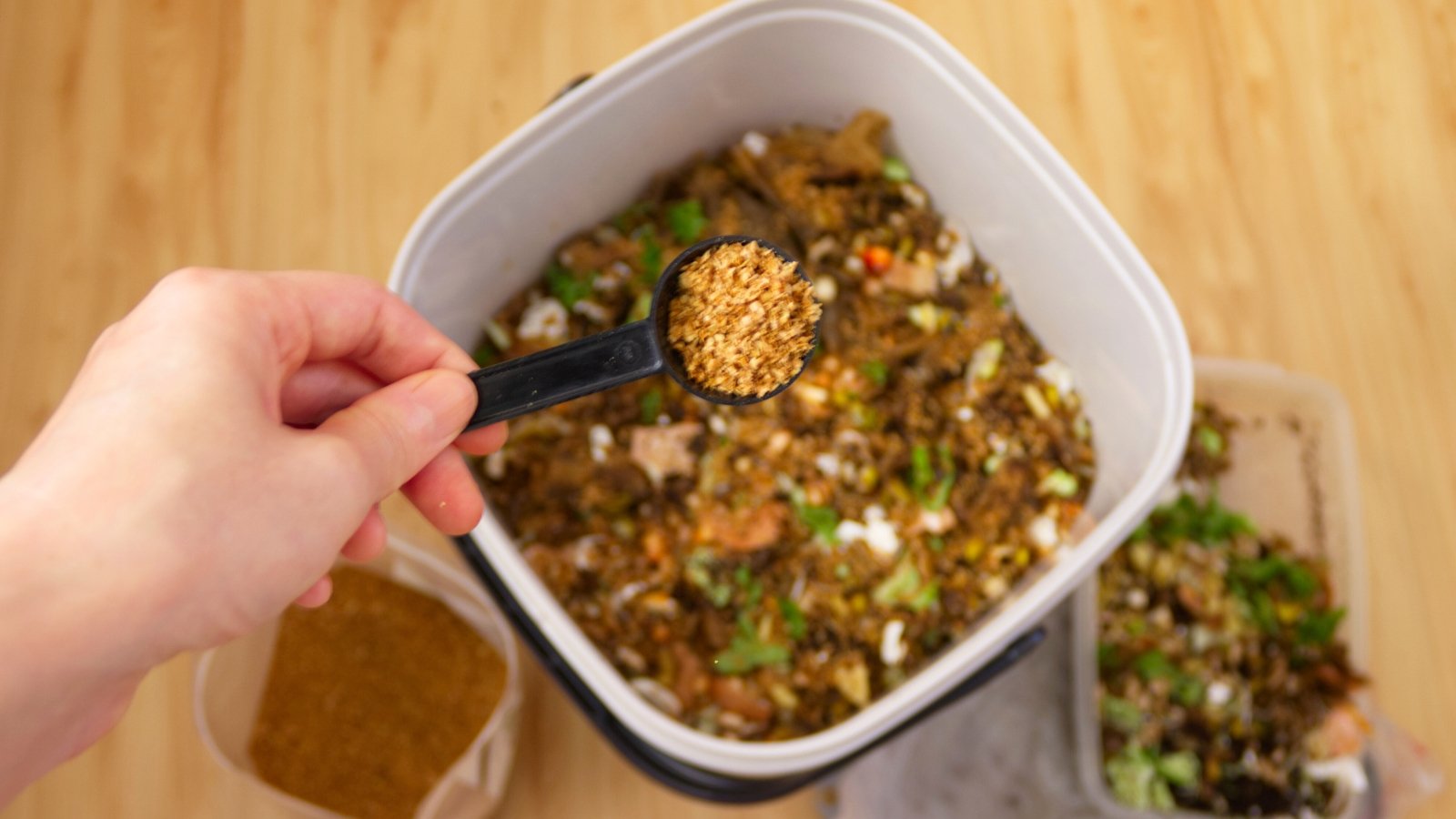 Ferment scraps under the sink with simple bokashi magic.
Ferment scraps under the sink with simple bokashi magic.Bokashi composting is a Japanese system that harnesses the fermenting process to pre-compost scraps. You’ll layer food scraps and bokashi bran in a closed container underneath the kitchen sink. The anaerobic process happens over a few weeks.
The bokashi microbes ferment the food scraps in the container. Then, you add the fermented scraps to healthy soils or compost systems for them to break down further.
Bokashi composting speeds up the process and minimizes smells. It’s perfect for small gardens and yards without compost piles. Simply ferment food scraps, then bury them underground for worms, larvae, and microbes to digest further.
Set Up a Worm Bin
 A worm bin quietly transforms scraps into garden gold daily.
A worm bin quietly transforms scraps into garden gold daily.Have you ever heard of vermicomposting? This small space composting technique utilizes the power of worms to convert yard and kitchen waste into humus-rich vermicompost, or worm castings. The worms eat the scraps and poop them out, converting them into a form that plants can use.
Many worm bins have a tiered setup with multiple bins stacked on top of each other. Shredded paper in the bins provides bedding for the worms. After peeling your banana, throw the peel with your other scraps into the bottom bin to feed your worms. As one bin fills up, the worms move upward into a new one and leave their castings behind in the old one.
Aside from paper scraps, you can use coco coir, compost, straw, or hay as a bedding material. Think of the bedding as their home, and your waste as their food. They like living at the same temperatures we do, and the bins can sit in your kitchen, laundry room, or shaded patio.
Healthy vermicomposting systems are free of foul odors and quick-working. If bad smells arise or the waste isn’t decomposing, check your vermicompost to ensure your worms are thriving.
Discourage Foul Smells
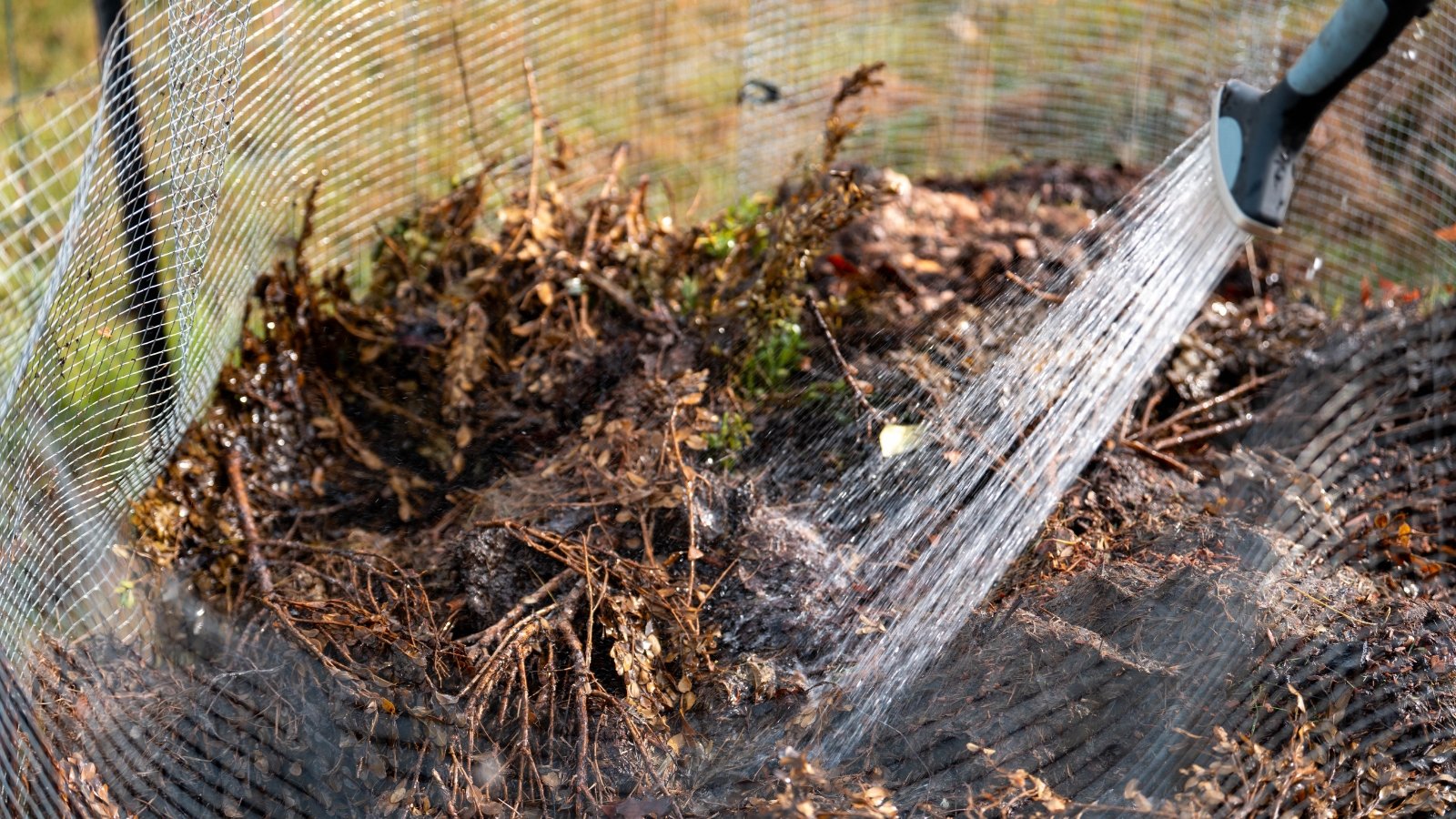 Moist but not soggy compost stays happy and odor-free.
Moist but not soggy compost stays happy and odor-free.Whether a large or small space, bad smells aren’t normal when it comes to composting! You may think rotting organic debris would generate a foul odor, but the breakdown process is relatively quick and odor-free. Foul smells are an indicator that something is awry in your composting process.
Discourage foul smells by turning compost regularly and by keeping the refuse moist, but not soggy. Whether you have a ramshackle pile or a sophisticated system, regular aeration and watering are crucial aspects of the composting process.
A few bad smells are easily preventable when you use the right materials. Avoid putting dairy, meat scraps, and large quantities of oil in your system.
Set Up Hot Compost
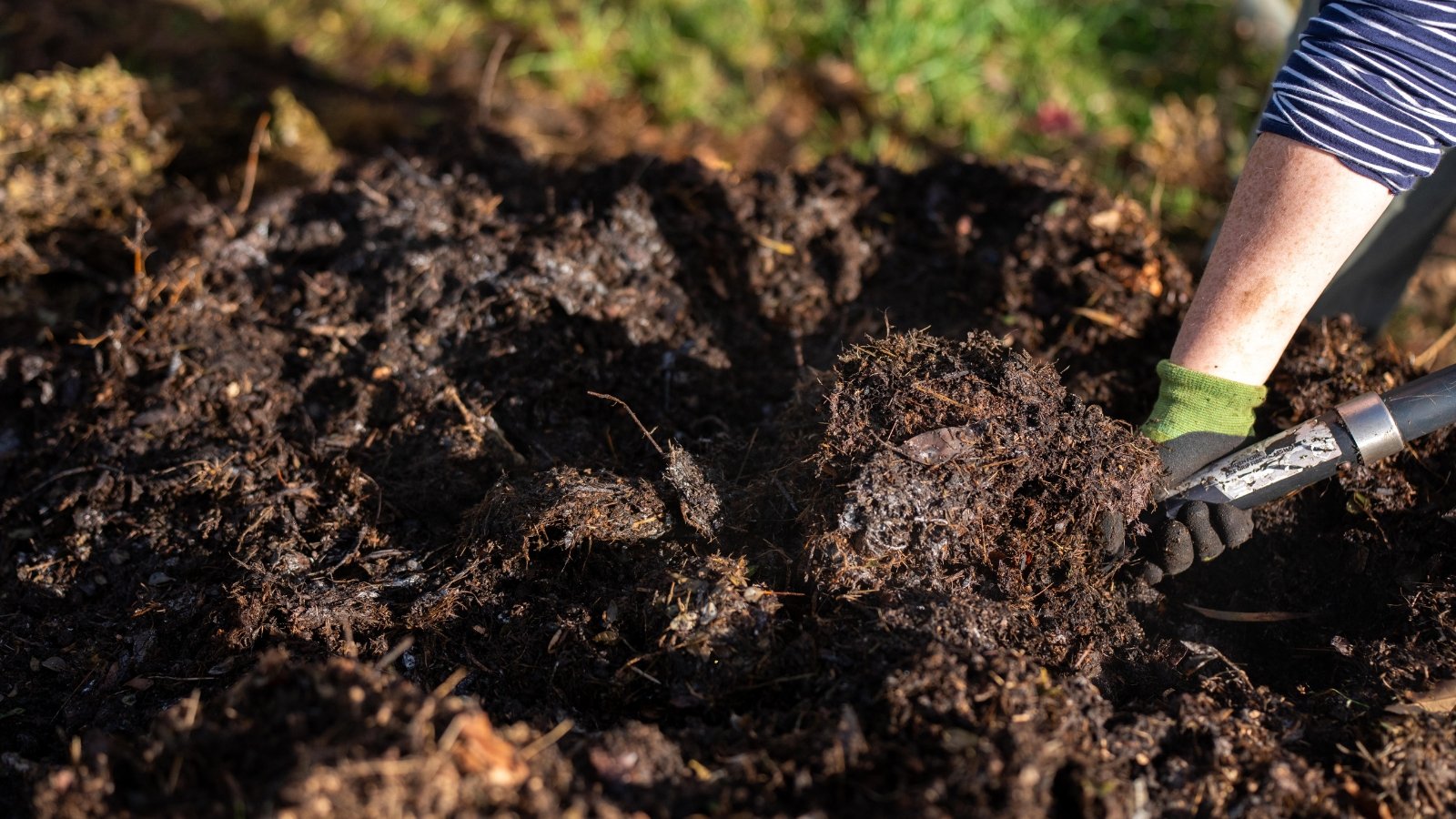 Turning the pile daily speeds up rich compost creation.
Turning the pile daily speeds up rich compost creation.Hot composting involves using piles, regular care, and consistent attention to speed up the process. You’ll have a finished product within three weeks to a few months! Though labor-intensive, hot composting is a rapid process; it’s perfect for gardeners who have too much waste to deal with.
After balancing your pile with equal parts of carbon and nitrogen-rich materials, you’ll turn it daily and maintain regular moisture levels. It should feel like a wrung-out sponge when you grasp a clump of it.
Cold composting takes much longer to finish, though it requires less maintenance and attention than hot composting. Which solution is best for you depends on your yard, how much space you have, and how much attention you’re willing to give your piles.
Buy a Countertop Composter
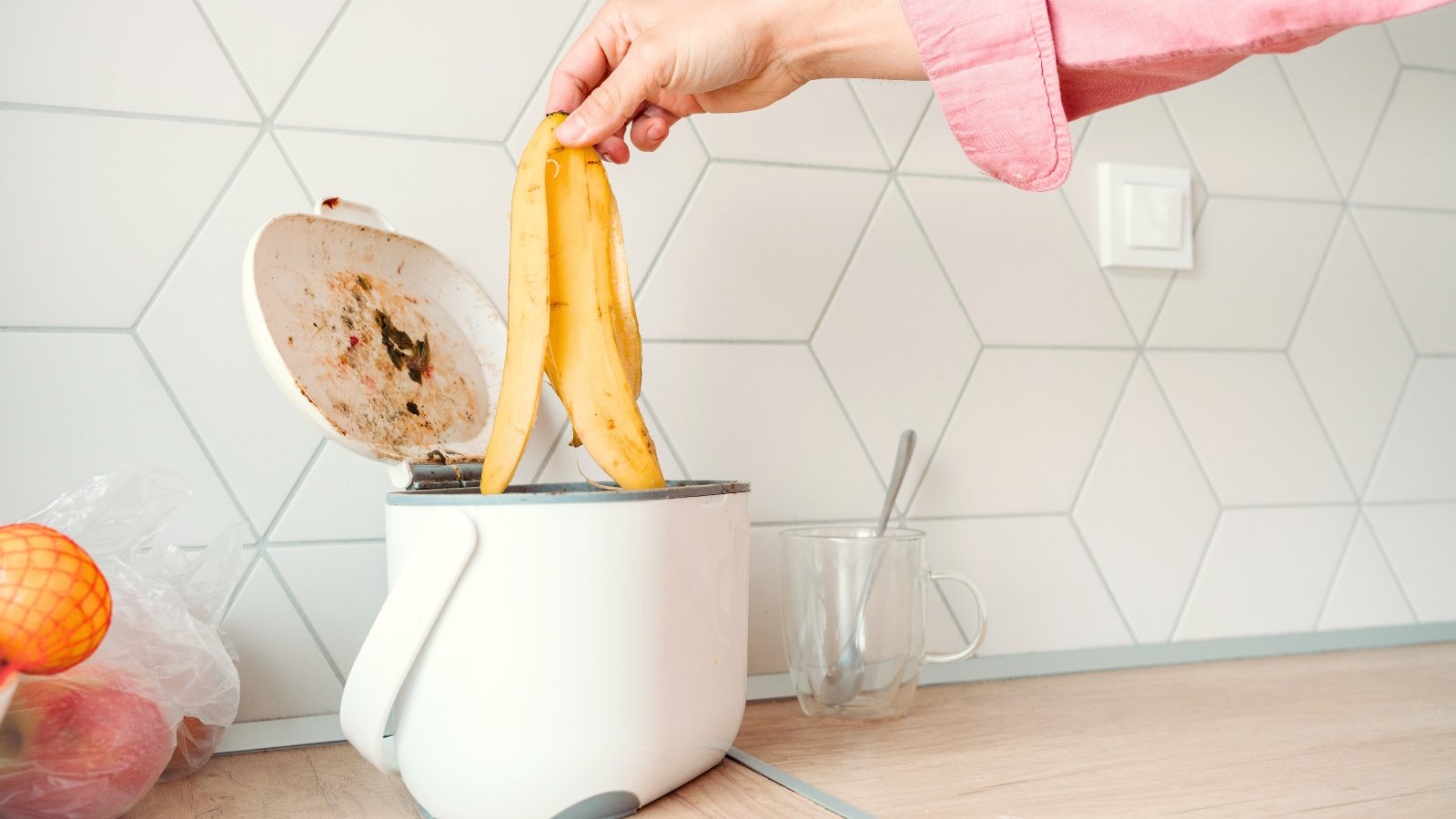 Food scraps become nutrient-rich soil boosters with countertop composters.
Food scraps become nutrient-rich soil boosters with countertop composters.Countertop composters are new inventions! These exciting tools convert food scraps and small amounts of plant debris into a compost-like material for soils. Some, like the Lomi composter, grind and heat the scraps in a process that mimics composting.
These machines use heat and grinding instead of microorganisms. They’re incredibly valuable for home gardeners or houseplant growers without much outdoor space. You can convert eggshells and watermelon rinds into an amendment for houseplants, raised beds, or potted vegetables.
Many countertop composters are available with an array of features. They only take hours to work instead of weeks or months. Select one that fits your needs, your budget, and your countertop.
Participate in an Exchange Program
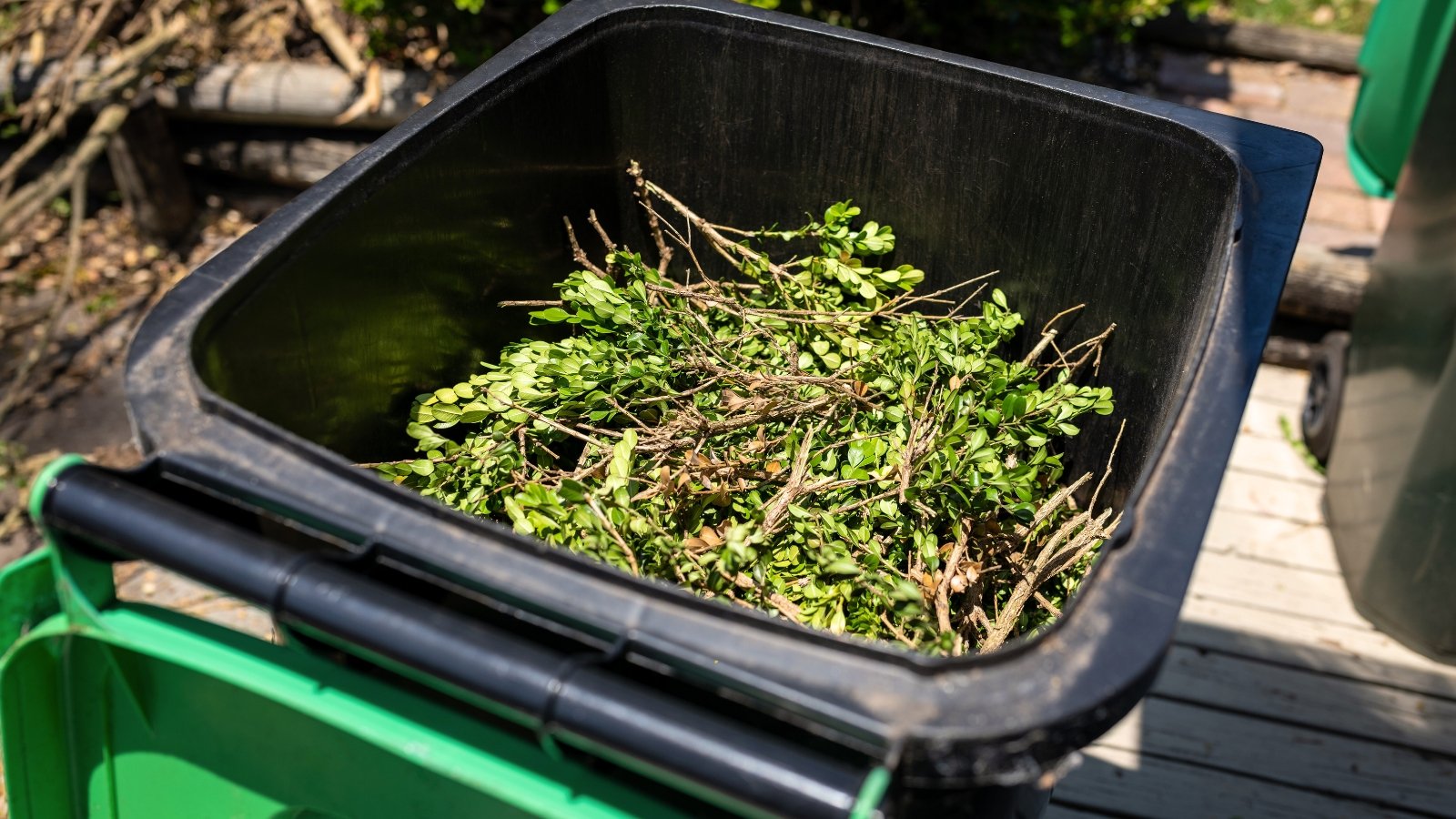 Public composting services turn your scraps into garden gold.
Public composting services turn your scraps into garden gold.This last option is growing in popularity in many cities and towns with public composting facilities. They offer services like exchange programs, where you give them your scraps and they give you finished compost, for a fee.
The exact details of the programs vary depending on your region. Research your city online to determine if they have free composting programs. Otherwise, look for private companies that offer exchange solutions for a small fee.
If you don’t need compost, you can place your debris in the green waste bin. Many cities offer waste disposal services that separate organic matter from trash and recycling. They’ll take care of it so you don’t have to. Look online to see how to get a green waste bin from your city and find out what materials you can put into it.


 2 weeks ago
22
2 weeks ago
22





















 English (US) ·
English (US) ·  French (CA) ·
French (CA) ·